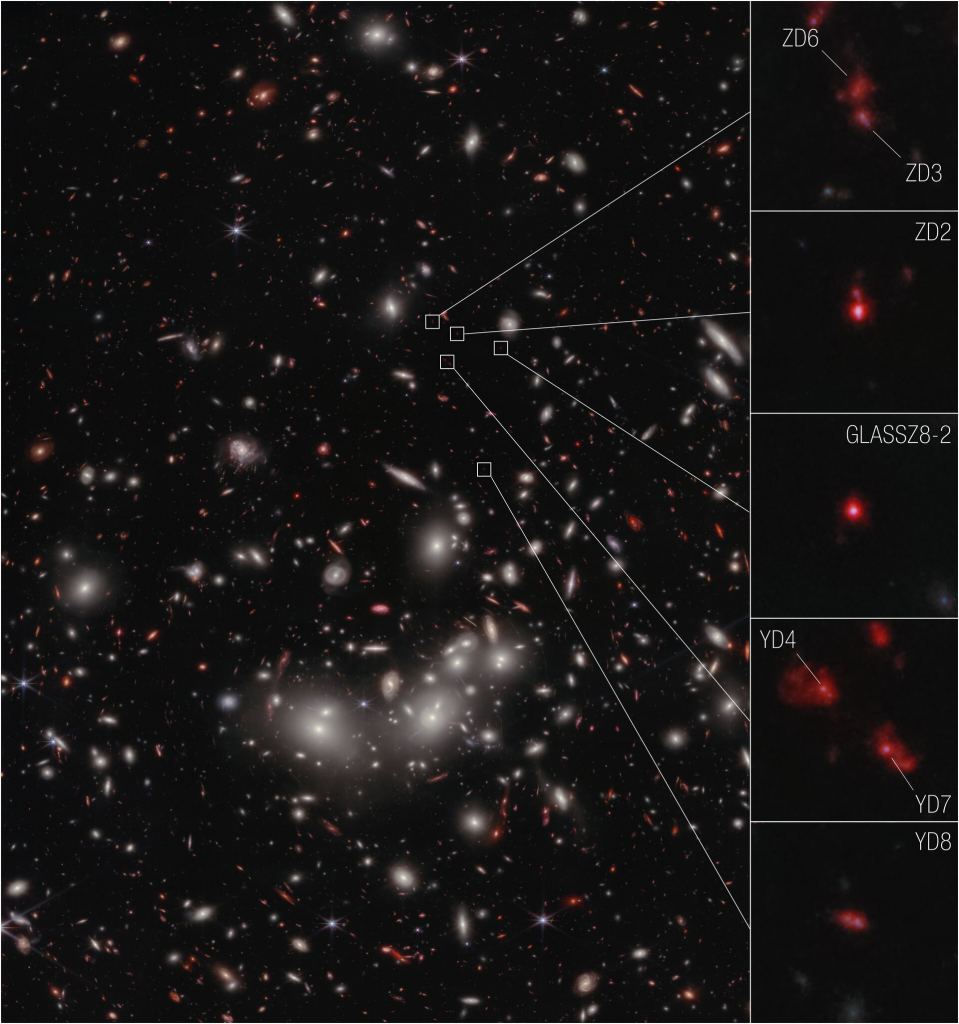One of the James Webb Space Telescope's science goals is to help cosmologists understand how the first galaxies and galaxy clusters formed in the early Universe. New images from the telescope show just that. Astronomers say the seven galaxies shown in this new JWST images are the earliest yet to be spectroscopically confirmed as part of a developing galaxy cluster. These galaxies are about 13 billion light-years away, meaning JWST is seeing them at about 95% of the age of the observable Universe.
Because these seven galaxies have been shown to be gravitationally bound together, astronomers say they are destined to form a much larger galaxy cluster in the future. The seven galaxies were seen just 650 million years after the Big Bang and were first identified by Hubble as promising candidates for further study by JWST.
Astronomers use redshift to measure approximate distances to very distant galaxies. The more distant an object, the more it will be redshifted. As the universe expands, wavelengths of light are stretched and "shifted" to redder wavelengths, which are longer. Very distant objects may emit energy in the ultraviolet or even higher energy wavelengths, while shorter wavelengths like ultraviolet and X-ray, are toward the bluer end of the electromagnetic spectrum.
So, extreme distances in the early universe are referenced by how much the light emitted from an object has been shifted as it travelled through space. These galaxies were measured to have a redshift 7.9, which correlates to 650 million years after the Universe began.
So far, one of the earliest galaxies JWST has seen, one named JADES-GS-z13-0, is estimated to be imaged at 325 million years after the Big Bang.
JWST's Near-Infrared Spectrograph (NIRSpec) instrument allowed astronomers to precisely measure the distances of these galaxies and therefore determine their ages, as well as helping them determine that the galaxies are part of a developing cluster.
One galaxy, named YD4, was previously estimated to be at a further distance based on imaging data alone and was not thought to be part of this group of galaxies. But now JWST data more accurately placed this galaxy at the same redshift as the other galaxies. ESA says that before JWST, astronomers did not have high resolution imaging or spectral infrared data available to do this type of science.
As JWST's predecessor has done many times already, the Hubble Space Telescope established these galaxies as candidates for observations by JWST for further study. HST’s Frontier Fields program was used to makes observations using gravitational lensing, to observe very distant galaxies in detail. However, because Hubble cannot detect light beyond near-infrared, there is only so much detail it can see. JWST then came online, allowing scientists to see further and deeper, gathering detailed spectroscopic data in addition to imagery.
 Universe Today
Universe Today

